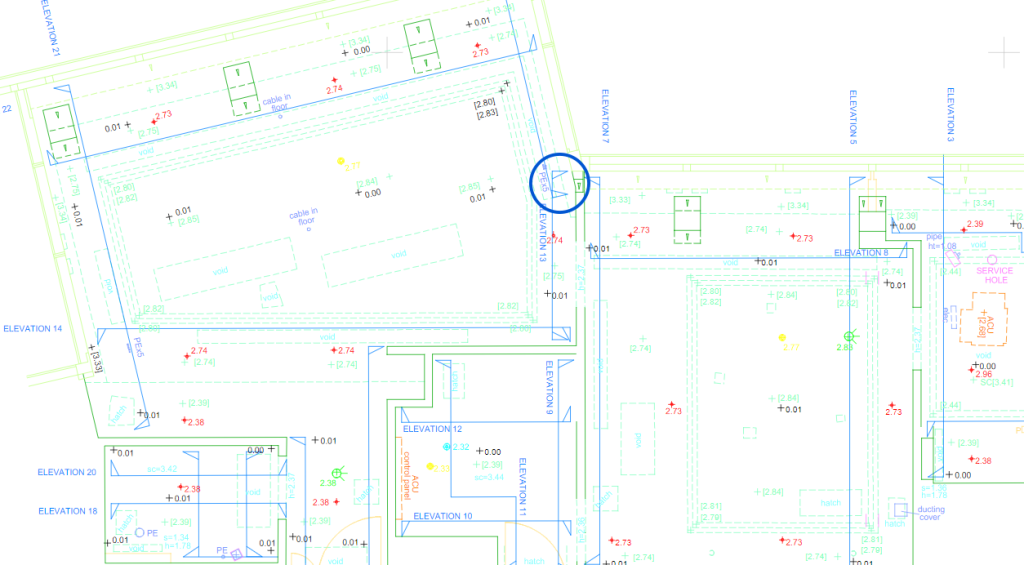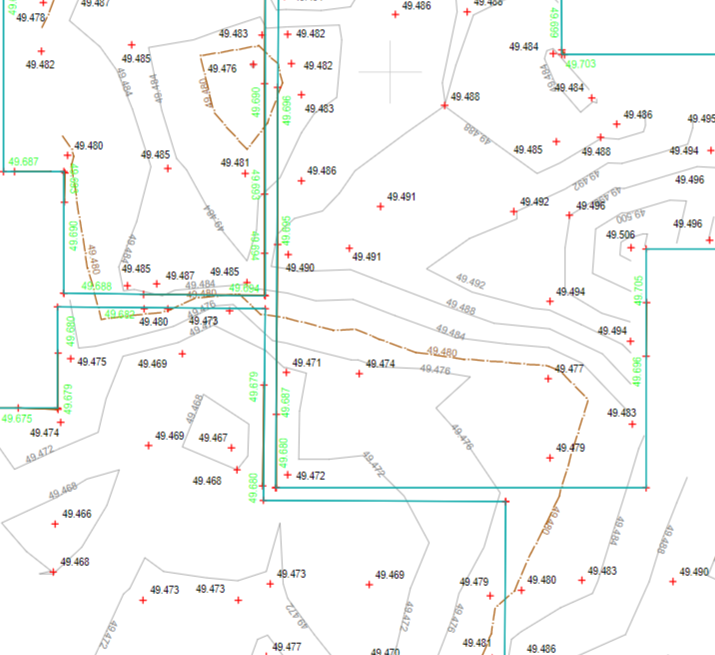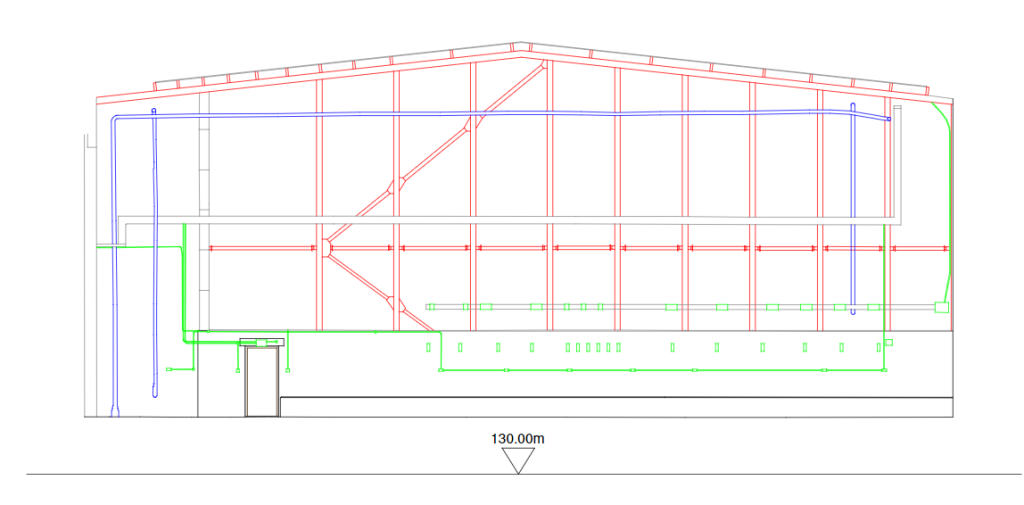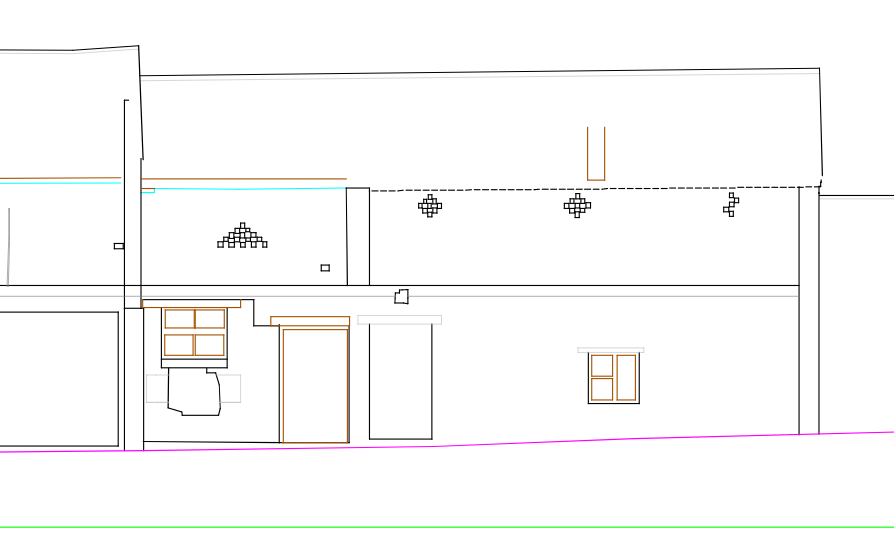What is an internal elevation drawing?
Elevation is a term used in the architectural and surveying world, to describe the orthographic (a 3D view done in 2D) projection of a room. The internal elevation shows the room’s details from a specific direction, requested by clients. These are drawn up in 2D images, which go from floor to ceiling.

What can an internal elevation tell me?
An internal elevation will show you how a building looks from the inside with all its architectural elements. These include:
- Light fixtures and plug sockets
- Door frame heights and widths
- Window measurements and sill heights from the ground
- Beam heights and widths
- Patterns on walls/windows
- Steel columns
- Wall material
- Vents
How to read elevations?
It’s important to remember when viewing an elevation drawing, that everything is on a single plane. There is no perspective, and all objects are shown at the same size and to scale.
Floorplans and elevations
When scanning for internal elevations, the use of a floorplan is beneficial. This shows us the floor from a bird’s eye view. On this floorplan, blue lines have been drawn with arrows pointing in the direction the client would require an elevation to be produced. The numbers in the different colours indicate the levels of ceilings, floors, and beams. Included in the drawings is a colour coded key, which indicates what each level is.

The below floor plans are from a measured building survey we did for a recent client. Our client’s building had been continuously built upon and the floors were left uneven. The contours of the floor are very reminiscent of a topographic drawing, which indicate just how much the levels of the floors were undulating around the room.

Examples of Powers internal elevations

The above internal elevation is from a project carried out for a client. In this picture, the chandeliers, patterns of the windows, the structure of the columns and the placement of the doors are shown. Internal elevations like this are mostly used for creating historic records of a building, interior design, renovation/remodelling or planning and regulations approval.

This image is the inside of a warehouse. We conducted internal elevations of the steelworks for our client, who wanted to extend the building. Having internal elevations of a warehouse is more significant, as it shows important structural information. It provides information on the location of steel beams and columns, pipes and other elements not seen from the outside. When planning construction work on a building such as this, having these internal elevations enables the architect to design the extension and create comprehensive construction phase plans.
Are you working on a building with lots of key features which show the historical importance of buildings, which would benefit from one of our internal elevations? Allow us to support you, contact us for a no-obligation quote by emailing surveyors@powersuk.com or on 01928 734473. One of our friendly team will be on hand to help.








